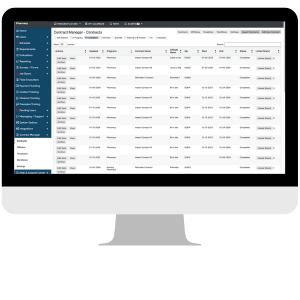Discover the key steps to successfully implementing CORE software in Higher Education programs and how it can revolutionize experiential learning program management.
What does a successful implementation of CORE software look like?
Clinical and experiential programs transitioning from manual program management methods or other software to CORE will start their journey to a more streamlined management approach in the implementation stage. A successful implementation of CORE software, specifically with ELMS and CompMS, in Higher Education programs is marked by the establishment of foundational tools through collaborative efforts.
Furthermore, a successful implementation of CORE software involves effective collaboration and communication between CORE and the program. This guarantees that the software infrastructure is set up to meet the institution's distinct needs and priorities, empowering administrative users to confidently navigate and manage their new system with autonomy.
✨💡 Pro Tip: Identify your super user(s). Who will be the admin(s) from your program that will own the platform and the data? The admin(s) is involved in the daily processes that the software will streamline. Be sure they take part in the implementation meetings.
Stage 1: Implementation kick-off
The first stage of implementing CORE software for clinical and experiential programs is conducting a comprehensive goal setting process. This involves identifying the specific needs of the institution and/ or program and aligning them with the capabilities and functionalities of the CORE software. We will put together deliverable schedules and project timelines, ensuring both parties are in sync and are working towards the same goals.
During this stage, program staff may evaluate their current program management processes, identify pain points and areas for improvement, and establish clear goals and objectives for the implementation of CORE software.
Programs starting with ELMS will typically begin focusing on setting up the processes for placements and scheduling. We are eager to learn about your program's methods for finding sites and approving them. Many programs benefit from using our Site Prospector module in ELMS. Our team will begin to set the stage to add in users and edit custom fields to address what information you'll track for students and preceptors, such as rotation type, graduation year, and what field they work in.
By thoroughly assessing needs and setting clear goals, institutions can lay a strong foundation for a successful implementation of CORE software and pave the way for improved program management and outcomes.
Stage 2: Data Collection and transition
This stage involves transferring particular existing program data from legacy systems or manual records into the CORE software, ensuring continuity of data.
During data migration, programs may need to clean, validate, and reformat their existing data to ensure its accuracy and compatibility with the CORE software. The CORE team will provide you with pre-designed templates that simplify the process of importing data. Although the initial setup of the software requires significant effort, the long-term benefits and time savings are well worth it.
✨💡 Pro Tip: Quality assurance is key. Conducting a thorough review of your data deliverables before submitting to the CORE team is a crucial element for achieving success in your implementation journey.
Keep in mind, the User Import Tool will allow admin users to add in new cohorts as your program accepts new students. Additionally, you can take advantage of the Pending Users tool, which is a convenient link integrated into your institution's website to streamline the process of new preceptor applications.
Stage 3: Administrator training
The third stage of implementing CORE software is administrator training.
User training and support are critical components of a successful implementation of CORE software. During this stage, the identified admins complete training sessions to ensure they are on the right path to be proficient in using the software and maximizing its capabilities.
The training programs may include hands-on virtual calls, online tutorials, and documentation resources that cover various aspects of the CORE software, such as data entry, reporting, and form building.
Institutions may also consider adding on ongoing support for their students and preceptors or instructors, including help desk services to address any questions or issues that may arise beyond implementation.
Stage 4: Go-live
Just as it sounds - Your new CORE software has the first foundational elements in the right place to become available for the users to interact with. The CORE team will be on-hand to ensure a smooth start up for your students, preceptors, administrators, and institutional partners.
In this stage, programs will have selected modules and features ready, often including (but not limited to) scheduling, competency tracking, hours tracking, field encounters, custom forms or surveys and evaluations.
By now, users will have a deep understanding of the extensive capabilities of their CORE software. As they continue their journey with CORE, they will have the opportunity to expand and enhance their program management by incorporating additional features and workflows.
Stage 5: Transition to Client Success
The program is ready to meet their dedicated Client Success Specialist!
This stage involves regular check-ins to monitor and assess the performance and impact of the software on the institution's experiential programs.
We will continuously solicit feedback from the program to identify areas for improvement or optimization. This feedback-driven approach enables institutions to refine their program management processes, address any challenges or gaps, and leverage the full potential of the CORE software.
Interested in learning how CORE can help your program? Schedule a demo today!
CORE Higher Education Group
Author




%20(1200%20x%20627%20px).png?width=352&name=2024%20conference%20guide%20(200%20x%20175%20px)%20(1200%20x%20627%20px).png)